7 recipes of ancient Russian dishes for your table
Content:
Today it has become fashionable to revive the traditions of our ancestors. Old Russian dishes appear in modern kitchens, the recipes of which were seemingly lost. We invite you to plunge into the past and prepare 7 ancient dishes.
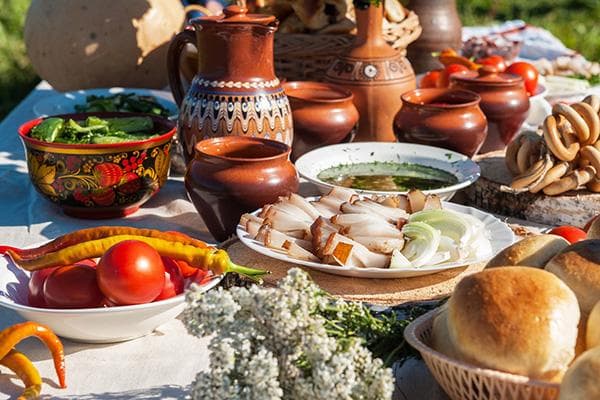
Briefly about the development of Russian cuisine
The medieval menu was very different from the modern one. The cuisine of Ancient Rus' was simple and consisted mainly of vegetables, fish, mushrooms and flour dishes.
Orthodoxy greatly influenced the development of cooking. For about 200 days a year, people fasted and did not eat meat.
Dishes were mainly prepared in the oven - boiled, steamed, baked, stewed. Pickling and pickling were also widely used. The meat was cooked in soups and porridges. Cottage cheese was made from milk, which was called cheese.
Russian cuisine became more diverse after World War II. In the 19th century, it was enriched with many dishes that are still prepared today. Ideas were gleaned from other countries. Non-Russian names began to be used: langets, beef stroganoff. Salads appeared. Russian “Vinaigrette” is still known throughout the world, as is “Olivier”.
During the Soviet era, Russian cuisine again underwent significant changes. Many ingredients have become scarce or relegated to the background. The traditions of different peoples of the USSR mixed. Dumplings, different types of cutlets and everything that is familiar to each of us from childhood appeared on the tables.
Recipes of ancient dishes
Many ancient Russian dishes have sunk into oblivion. Russia's fish wealth has depleted significantly. In this regard, recipes with fish have lost their relevance. In addition, the subtleties of cooking were rarely described. Culinary knowledge was passed on from old to young. It was believed that any woman knows how to cook what. Therefore, the first cookbooks (1547) contained only a list of dishes. No one has been able to figure out how to cook some of them. For example, “shchipanaa steamed.”
But still, an impressive part of the recipes were recorded and saved. This is what they looked like at that time:
It is difficult to cook such recipes in a modern kitchen. The most interesting ones were adapted. Next, we will describe how to cook ancient Russian dishes step by step, without an oven, in a city apartment.
Vole
Soup is a traditional Russian dish. It has been prepared at all times. Soups were called breads and stews. Breads included cabbage soup, fish soup, kalia, borscht and solyanka. There were 60 types of cabbage soup alone: green, lazy, empty, with meat, with mushrooms, with fish, daily allowance. There were even legends in neighboring countries, saying that Russians freeze cabbage soup for travelers on the road, and this only makes the dish tastier.
Vole is the favorite stew of our ancestors. In a modern kitchen it is prepared from the following products:
- rye flour – 1.5 cups;
- warm water – 1 l;
- onion – 1 pc.;
- chicken – 500–800 g;
- salt, seasonings and herbs - to taste.
Recipe:
- A day before cooking, add water to the flour and place in a warm place. The basis of the dish is raschin, or so-called rye sourdough. Bubbles on the surface indicate that the raschin is ready.
- Cook chicken and onion broth. If desired, garlic, dry mushrooms, pepper, and bay leaf are added to it.
- Add the starter to the finished broth, constantly stirring the liquid with a whisk.
The stew turns out thick, the consistency of liquid sour cream. It is eaten with croutons, new potatoes, and sour cream. You can fry the onion until golden and add it to the dish, put the chicken cooked for the broth in a plate, and chop a bunch of fresh herbs.
Stuffed turnips
Potatoes are an imported vegetable. Before it took root on Russian soil, people consumed turnips in large quantities. It kept well all winter. It was boiled, baked, fried, stuffed, added to soups and pies. And the dried root vegetable tasted like dried fruit.
To prepare stuffed turnips you will need:
- turnip – 4 pcs.;
- porcini mushrooms – 200 g;
- small onion – 1 pc.;
- butter – 30 g;
- chicken egg – 1 pc.;
- parsley, dill – 1 bunch;
- pepper and salt - to taste.
Recipe:
- Peel and boil the turnips until tender in salted water.
- Remove the top (1-2 cm) and use a spoon to scoop out the pulp, being careful not to damage the edges.
- Separately boil the egg and mushrooms.
- Finely chop the mushrooms and fry with onions. Peel the egg, chop and add to the mushrooms. Chop the greens here, add salt and pepper to the resulting filling.
- Stuff the turnips, cap them and place them in a baking dish. Pour 1-2 cm of water into the bottom.
- Bake at 180 degrees until done (20-35 minutes).
Buckwheat pancakes
Pancakes are one of the most ancient Russian dishes. They were also used in pagan rituals. By the way, Maslenitsa, on which it is customary to bake pancakes, is an ancient pagan holiday. The dough was not made from the usual wheat flour; it appeared a little later. People ground oats, rye and other grains.
For buckwheat pancakes you will need:
- buckwheat flour – 1 tbsp.;
- wheat flour – 1 tbsp.;
- yeast – 15 g;
- milk – 2 tbsp.;
- sugar – 1 tbsp. spoon;
- chicken eggs – 2 pcs.;
- cream – 50 g;
- butter – 1 tbsp. spoon;
- vegetable oil for frying.
Step-by-step preparation:
- Place buckwheat flour and sugar in a large bowl. Add 1 tbsp. warm milk with diluted yeast. Stir and place in a warm place.
- When the dough starts to rise, pour out the remaining milk and add wheat flour. Place the bowl back in a warm place.
- At this time, cream the butter with sugar, add the egg yolks. Beat the whites with cream. Stir everything into the dough and leave it in a warm place for another 20 minutes.
- Fry the pancakes in a greased frying pan on both sides until nicely browned.
Botvinya
Probably everyone in Russia knows the fairy tale about tops and roots. But few people know that in Ancient Rus', “inedible” tops were eaten with great pleasure. Young beet tops were considered especially tasty and healthy. We suggest you try to prepare an ancient Russian soup based on it - classic botvinya.
Botvinya consists of the following products:
- beet tops – 150 g;
- sorrel – 150 g;
- fresh cucumbers – 4 pcs.;
- radishes – 6 pcs.;
- onion – 1 pc.;
- red fish fillet – 300 g;
- sour kvass – 250 ml;
- greens: parsley, dill, onion;
- bay leaf, salt, pepper to taste;
- grated horseradish - 0.5 teaspoon.
Recipe:
- Prepare a broth from red fish, onion, bay leaf, salt and pepper.
- Chop the greens, sorrel and tops.
- Remove the fish from the broth, add the herbs to the pan and simmer for 2-3 minutes.
- Add horseradish and salt to taste. Pour out the kvass. Cool.
- Cut the cucumbers and radishes into strips, place them in plates and pour cold broth with kvass. Add a piece of previously boiled fillet to each serving.
Rybnik
Fish pie is a dish that has survived practically unchanged to this day. He is still respected and loved in many families. Pies used to be considered a holiday food. The name itself - pie - comes from the word “feast”, “feast”. Each holiday and day had its own recipe. The filling was very varied. But especially in Rus' they loved baked goods with fish.
Ingredients for the fishmonger:
- milk – 120 ml;
- water – 30 ml;
- eggs – 2 pcs.;
- butter – 4 tbsp. spoons;
- sugar – 1 tbsp. spoon;
- flour – 350 g;
- yolk for glaze;
- quick yeast - 1 teaspoon;
- fish fillet (salmon, pike, ide, halibut or burbot) – 500 g;
- onion – 1 pc.;
- dill and onion greens – 1 bunch;
- salt and pepper to taste.
How to cook the pie:
- Dissolve the yeast in warm water with sugar and leave covered with film. Meanwhile, beat the eggs with milk and a pinch of salt. Add the flour and yeast to the mixture when it starts to bubble. Knead the dough. Add warm butter (2 tablespoons) to it and knead until plastic. Wrap the dough in film and leave in a warm place for 1 hour.
- Cut the fish fillet, salt and pepper. Chop the onion and fry until golden brown. Combine with fish.
- Lightly knead the risen dough, divide into 2 parts and roll into circles or rectangles 5–7 mm thick. Spread the fish filling onto the first half of the dough, leaving a space at the edge (2-3 cm). Sprinkle the fish with chopped herbs and small cubes of butter. Cover the filling with the other half of the dough. Interlace the edges of the pie nicely.
- Place the workpiece in a warm place for half an hour.
- Preheat the oven to 200 degrees. Brush the surface of the pie with egg yolk, beaten with a little water, and bake for 40 minutes.If the crust darkens ahead of time, pierce it in several places with the point of a knife, cover with foil and continue cooking.
Oatmeal jelly
Kiseli is a traditional Russian dish. In the old days they were brewed with flour. Oatmeal and cranberry jelly were prepared for every holiday.
To prepare the drink you need:
- oats – 250 g;
- water – 2 l;
- black bread – 30 g;
- sourdough – 1 teaspoon (you can do without it);
- salt - a pinch.
Recipe:
- Grind the oats using a coffee grinder. The smaller the better.
- Dissolve flour, a slice of bread, sourdough and salt in warm water.
- Leave the mixture in a warm place for a day.
- Stir the liquid and strain through a cloth. Squeeze it well. Pour some oatmeal drink into a bowl and pour in the pulp. Stir and strain. Repeat the procedure until the pulp resembles sand.
- Place the oat water on very low heat and, stirring constantly, cook for 15–20 minutes (at 90 degrees).
- Add salt to hot jelly. Serve with milk and honey when it has set.
Store the pulp in the refrigerator. Use it as a starter the next time you decide to make jelly.
Boys
There were no sweets as such in Ancient Rus'. For dessert they ate sweet pies and pies, jelly, gingerbread, and parenki - sweet dried vegetables.
The recipe is very simple:
- Peel pumpkin, beets or carrots. Cut into large strips.
- Pour 1-2 cm of water into a cast iron or clay pot, add vegetables and bake in the oven at 170 degrees until soft.
- Dry the vegetables in an electric dryer for 4-5 hours or dry them in the oven on a wire rack over low heat with the door open. Constantly watch the boys and turn them over.
Old Russian dishes cannot be called sophisticated and refined.But they have one significant advantage: they are very healthy, satisfying and consist exclusively of natural ingredients. By preparing them in your kitchen, you will receive unforgettable pleasure and an explosion of emotions. And how surprised your loved ones will be at the unusual botvinya instead of borscht, rybnik and fluffy buckwheat pancakes!
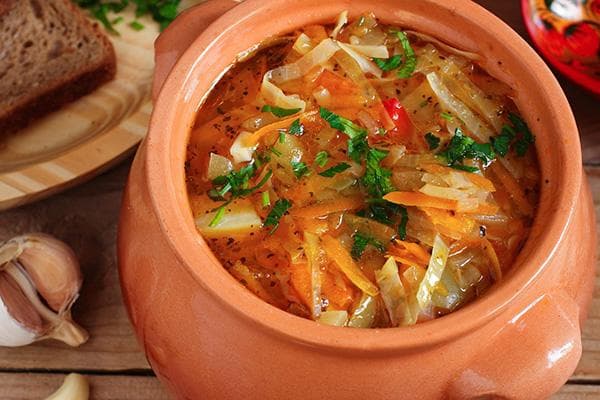
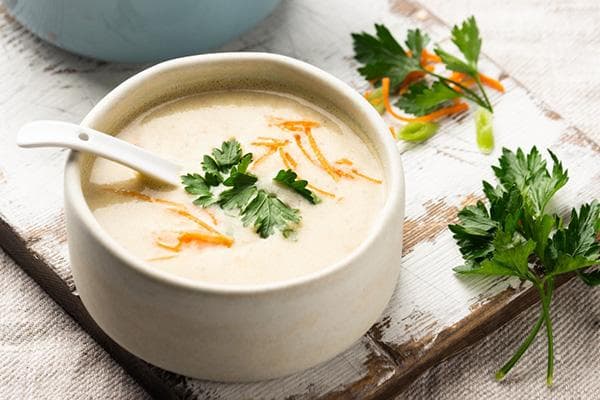
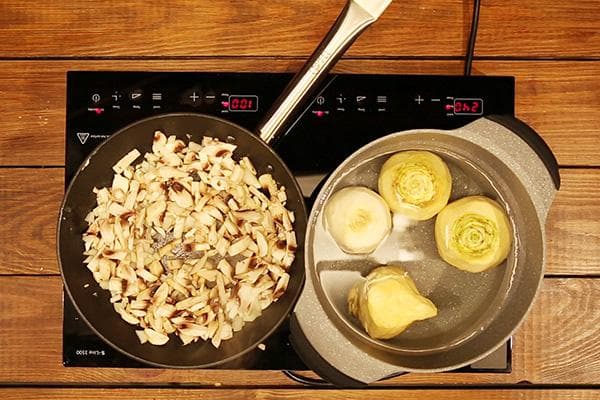

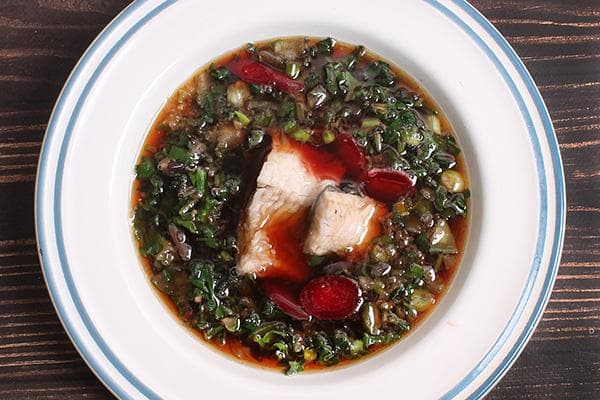
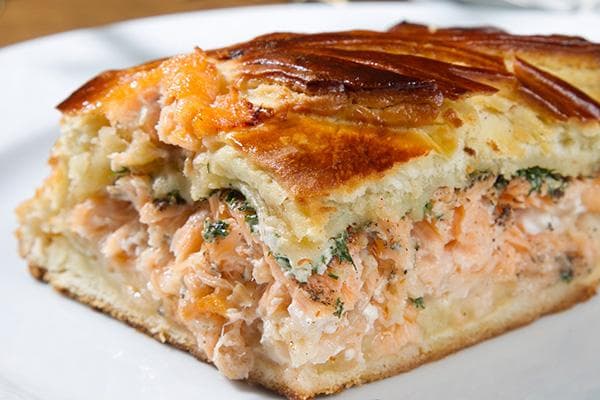
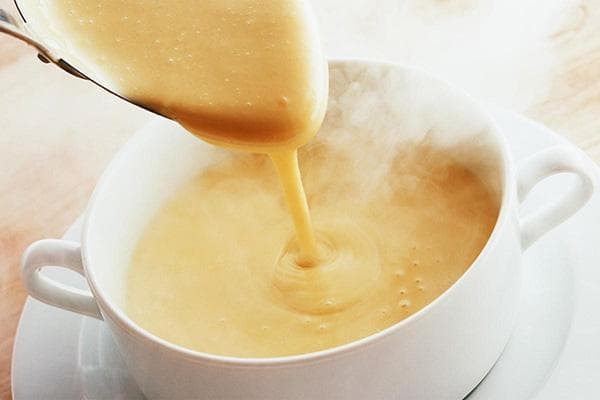
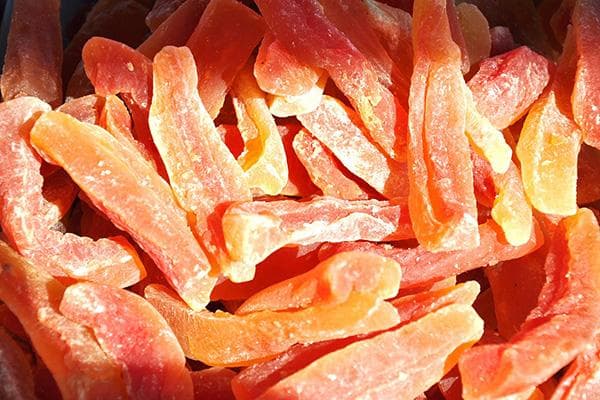
I really like the KURNIK pie. I often baked it for the holidays. The top and bottom of the pie are puff pastry. There are three layers inside. Between the layers are pancakes. 1st layer is boiled rice with parsley. 2-layer boiled chicken. 3-layer fried mushrooms with onions.
One question: where does the yeast or even instant yeast come from? sourdough is not a question. and yeast??? Maybe there's something I don't know?
I prepared stuffed turnips according to the recipe from the article. Delicious. I recommend everyone to try it.